If you are looking for an unforgettable experience in Cusco, you are in the right place. The mountains of this imperial city hold natural secrets that will leave you in awe. Imagine lakes of crystalline waters surrounded by majestic snow-capped peaks and valleys full of greenery, an authentic palette of colors only nature can offer!
These lakes are a visual spectacle and the ideal destination for trekking and hiking enthusiasts. Many of them are in restricted access areas, which means you will have to walk to get there, but that only adds excitement and adventure to your trip!
In addition, many outdoor activities await you in the Cusco region, from hiking in the Andes to exploring ancient Inca trails to trekking in breathtaking mountain scenery. Enjoy the opportunity to immerse yourself in the rich local culture, exploring archaeological ruins and picturesque villages that will transport you back in time.
In this blog, we invite you to discover some of Cusco’s most impressive lakes and give you helpful information to plan your adventure. Get ready to live experiences you will never forget!
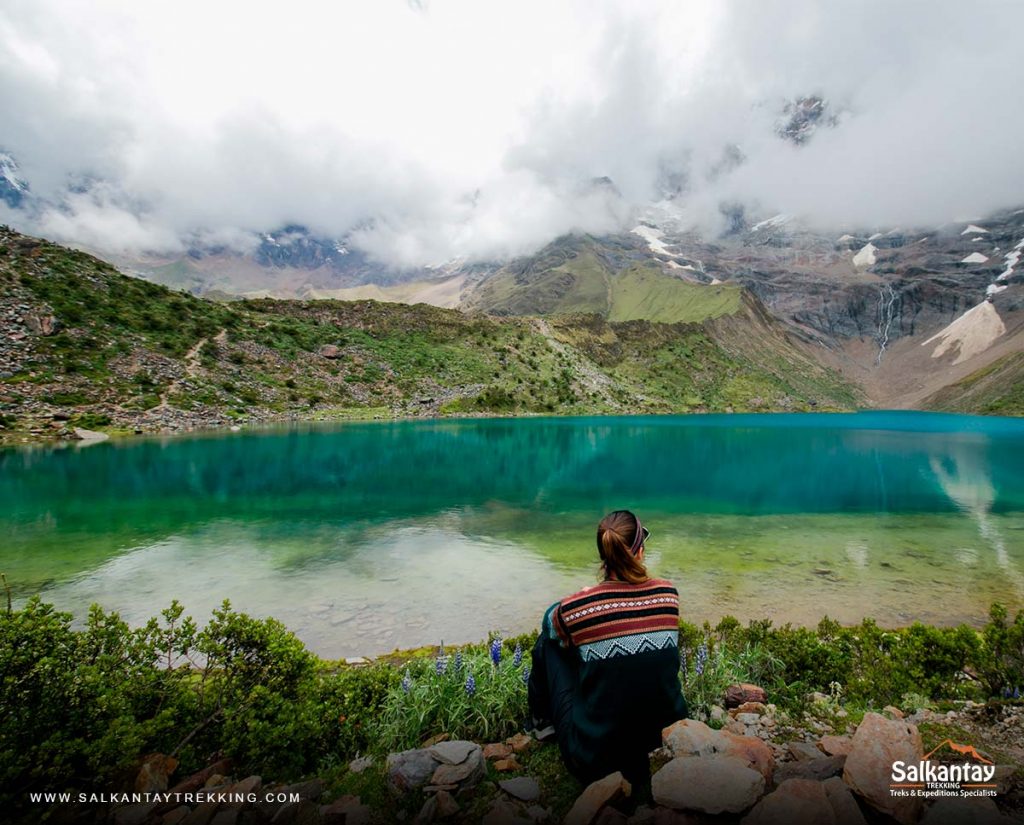
Ausangate 7 lakes
Ausangate 7 lakes, nestled in the Cusco region of Peru, are a natural wonder of unparalleled beauty and cultural significance. These lakes, each with its distinct color and charm, are a sight. Set amidst towering snow-capped peaks and breathtaking Andean landscapes, they offer a one-of-a-kind experience for nature enthusiasts and adventure seekers. This article delves into the intriguing history, awe-inspiring beauty, and thrilling activities that await you at the Ausangate 7 lakes. Embark on this journey through a surreal landscape and uncover why these lakes are a must-visit for your next Cusco escapade.
Location
The lakes are conveniently located about 100 kilometers southeast of the city of Cusco, in the jurisdiction of the province of Quispicanchis, district of Ocongate, in the town of Pacchanta. This proximity makes them easily accessible, allowing you to embark on this adventure without hassle.
Details of the hike
- The trek to the lakes is typically completed in a day, covering a distance of about 15 to 20 kilometers (round trip). Due to the altitude, this moderate to challenging hike usually takes between 6 and 8 hours, depending on the pace of the group and the stops made. It’s important to note that prior acclimatization is recommended to ensure a safe and enjoyable journey.
- Maximum altitude: the approximate maximum altitude is 4,600 meters above sea level.
- Duration: it usually lasts between 6 and 8 hours, depending on the pace of the group and the stops made.
- Difficulty: The hike is considered moderate to challenging due to the altitude. Prior acclimatization is recommended.
How to get there?
In Salkantay, we offer you a personalized and tailor-made experience. Do you dare to venture through these beautiful passages? We will depart from Cusco to the south, exploring picturesque villages where the local culture is preserved. Once in the community of Pacchanta, at more than 4,100 meters above sea level, a local family will offer us an Andean breakfast. We will then ascend to the Ninaparayoc viewpoint, passing by lakes such as Comercocha and Alqacocha. Before returning to Cusco, we will return to Pacchanta to explore additional lakes and enjoy hot springs!
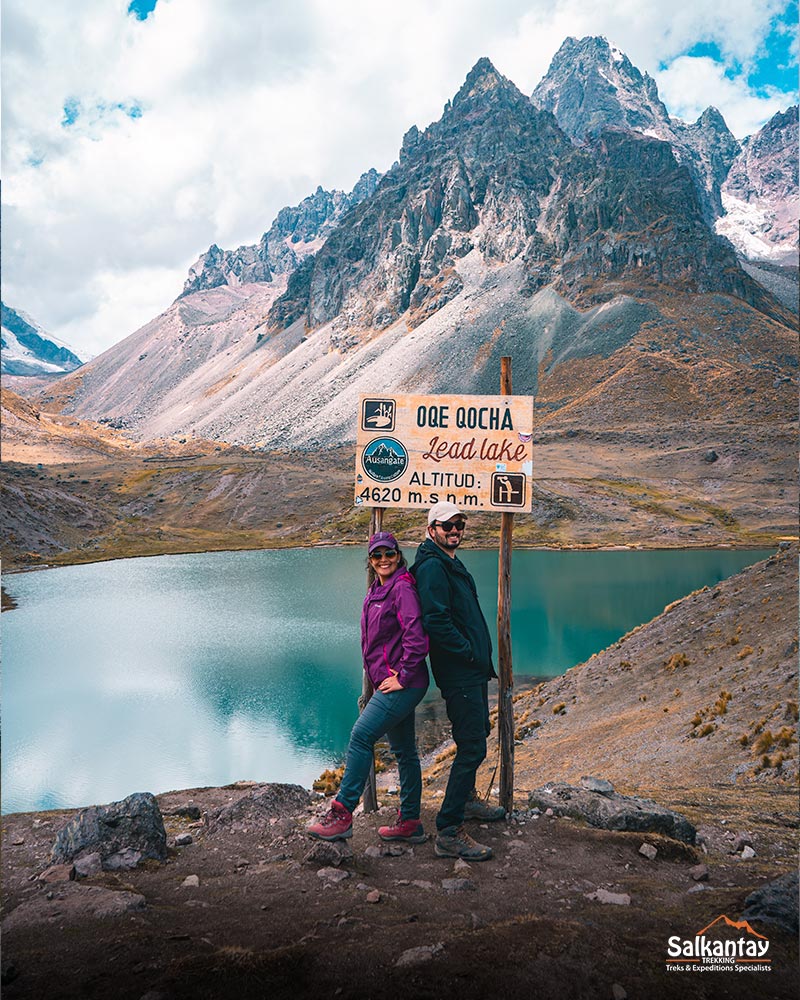
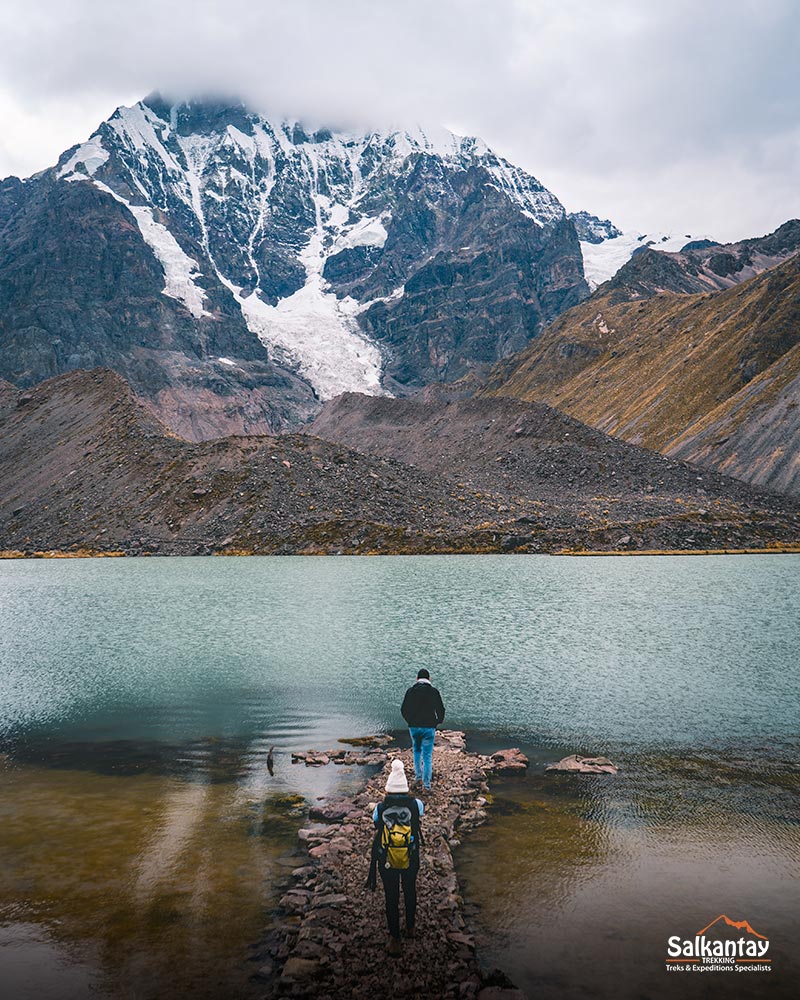
Importance
- Scenic value: these lakes, located in the Ausangate region of the Peruvian Andes, offer breathtaking views and landscapes of outstanding natural beauty. Their location in the high mountains and their scenic surroundings make them popular tourist destinations and recreational sites for visitors.
- Ecological importance: They are home to a unique biodiversity, providing habitats for diverse flora and fauna adapted to the region’s extreme altitude and climatic conditions. As part of the area’s ecosystem, they conserve biological diversity.
- Cultural impact: The local communities that surround them consider them sacred. In the Andean cosmovision, water is a vital element, and the lagoons are revered as sacred places that connect with nature and mountain spirits. They are also part of the ancestral territory of indigenous communities that have preserved their traditions and culture over time.

Recommendations
- Acclimatize: spend a few days in Cusco before trekking to avoid altitude sickness.
- Hire a guide: it is advisable to hire a local guide who knows the area and can explain the importance of the lagoons.
- Bring adequate equipment: trekking clothes and footwear, sunscreen, hat, water, energy snacks, and warm clothes.
- Respect the environment: do not leave garbage on the trail, and respect local customs.
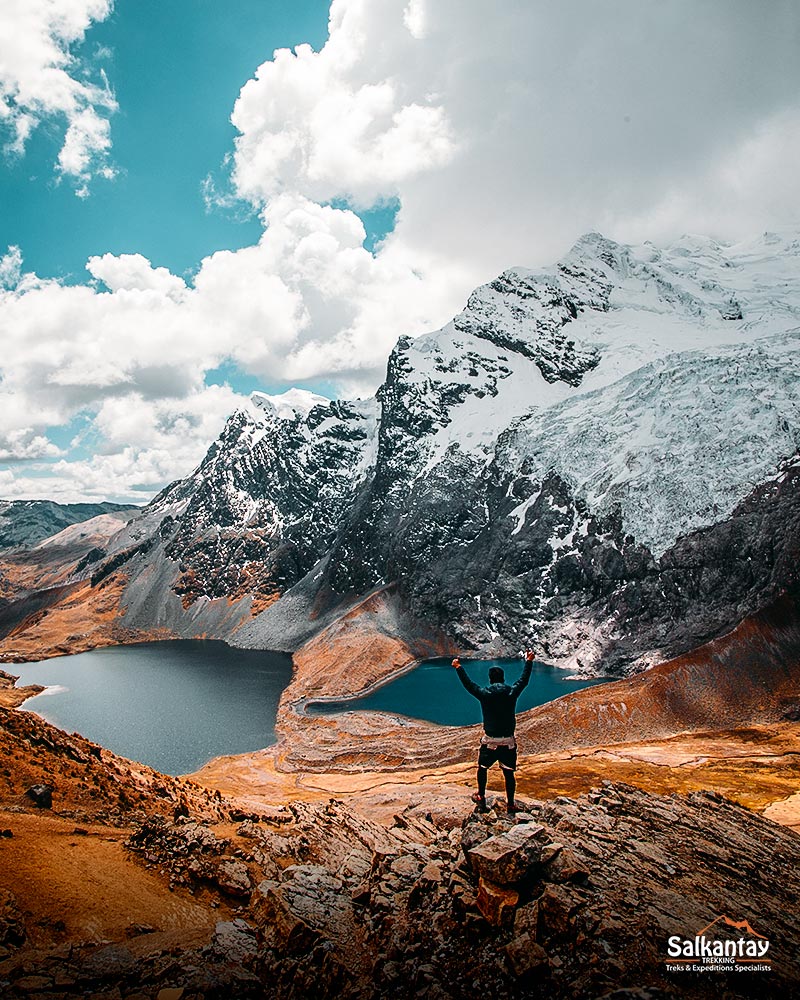
Humantay Lake
Imagine finding yourself in front of the majestic mountains of Peru, where a treasure of unparalleled beauty is hidden: a lake of blue, turquoise, green, yellow, and red tones. Among this vast array of natural wonders, one dazzling jewel stands out in the Cusco region: the Humantay Lake, located at an impressive altitude of 4,200 meters (13,780 feet) above sea level. Here, its emerald waters merge with the imposing presence of a glacier that dazzles with its immaculate whiteness, creating an incomparable visual harmony.
Describing the beauty of the Humantay Lake in words or capturing its splendor in a photograph is a difficult task because its magnificence must be experienced in person to appreciate it fully. If you can travel to Cusco, you must take advantage of this unmissable destination. You will have the opportunity to escape the hustle and bustle of the city and immerse yourself in the tranquility of nature while exploring Humantay Lake. This place offers a breathtaking visual spectacle and a well-deserved break from the hectic pace of urban life in Cusco.
Location
The Humantay Lake is located about 120 kilometers northeast of Cusco, in the district of Mollepata, province of Anta. It is situated at the foot of the snow-capped Salkantay, one of the highest mountains in the region.
Details of the hike
- Hiking Distance: 5 km (3.1 miles)
- Starting altitude: 3,900 m (12,795 ft.)
- Duration of hike: approximately 3.5 hours.
- Humantay Lake Elevation: 4,200 m (13,780 ft)
- Difficulty: Moderate
How to get there?
The day tour is the most popular way to get to the Humantay Lake in Cusco. These tours generally include transportation, a guide, breakfast, and lunch. The hike to the lake takes approximately 2 to 3 hours, and it is a round trip with moderate difficulty. If you decide to experience this option with us, we will pick you up early at 4:00 a.m. from your hotel in Cusco. After breakfast in Mollepata and enjoying the sunrise in the mountains, we will head to Soraypampa at 3,900 meters. Here, you will begin your hike to the Humantay Lake, which lasts approximately two hours. It would help if you used a walking stick and stroll due to the rocky terrain and altitude.
Once at the lake, you can enjoy its stunning turquoise beauty, getting the best views as you hike further up the rocky slopes. Our guide will perform a small thanksgiving ritual to nature with coca leaves. After descending for about an hour and a half, we will return to Soraypampa to enjoy a lunch prepared by our chef at the Sky Camp. Finally, we will return to Cusco in our private transportation, dropping you off at your hotel around 6:30 p.m. Come and experience this incredible experience with us!
If you’re up for a more challenging adventure, consider our multi-day trek with the Humantay Lake as a highlight. One of our most popular options is the 5-day Classic Salkantay Trek, which uniquely blends stunning landscapes and cultural experiences. We also offer a range of other packages, from 2 to 9 days, to cater to your trekking experience and explorer spirit. Check out our blog for a comprehensive guide on preparing for the Salkantay Trek to Machu Picchu, ensuring you’re fully equipped for this exhilarating journey.
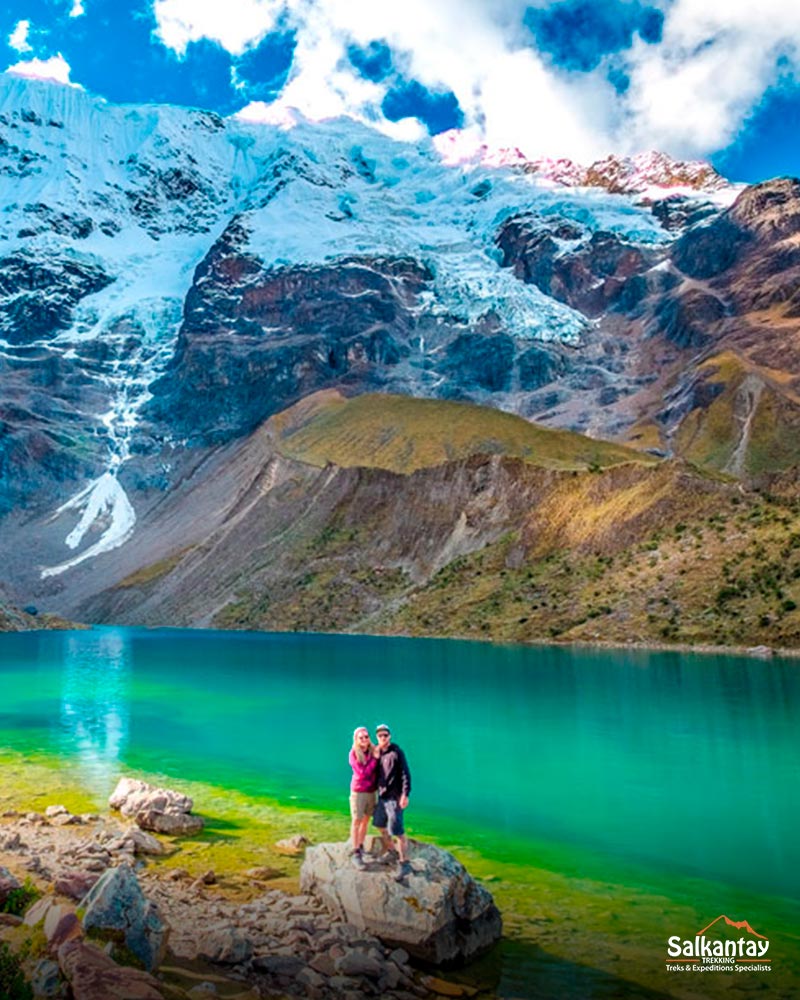

Can I get to the lake on my own?
Of course, you can, and below we will explain step by step what your route will be:
Your adventure begins by boarding a public bus from Cusco to Mollepata. The bus leaves from the Arcopata bus terminal and costs around 15 soles (4 USD).
Upon reaching Mollepata, you’ll need to hop on a collective cab to go to the community of Soraypampa. These cabs are a convenient and cost-effective option, usually available near the bus stop.
You can opt for a conventional cab if you can’t find one of these collective cabs. In this case, the cab can cost 50 soles (approximately 12 USD).
Once in Soraypampa, we have to walk to the Humantay Lake. As we mentioned before, it is a 2km hike, and depending on our stamina, it can take 2 to 3 hours. It is a lovely experience, but it is recommended to reach the lagoon alone only if you are used to this trekking, as the trip can be exhausting at 4,200 meters above sea level.
Importance
- Natural beauty: the Humantay Lake is known for its impressive natural beauty. Its crystal clear turquoise waters contrast with the snowy mountain landscape, creating a truly spectacular image.
- Cultural significance: This famous lake is vital to the local population, as it is believed to be a sacred place, and its waters have healing properties.
- Tourism: This beautiful place has become one of Cusco’s most popular tourist destinations in recent years. Its natural beauty and easy access make it ideal for travelers seeking an unforgettable experience in the Andes.
Recommendations
- Acclimatize to the altitude before hiking.
- Wear adequate clothing for the cold and rain.
- Wear sunscreen and a hat to protect yourself from the sun.
- Drink plenty of water to avoid dehydration.
- Respect the environment and do not leave garbage in the area.
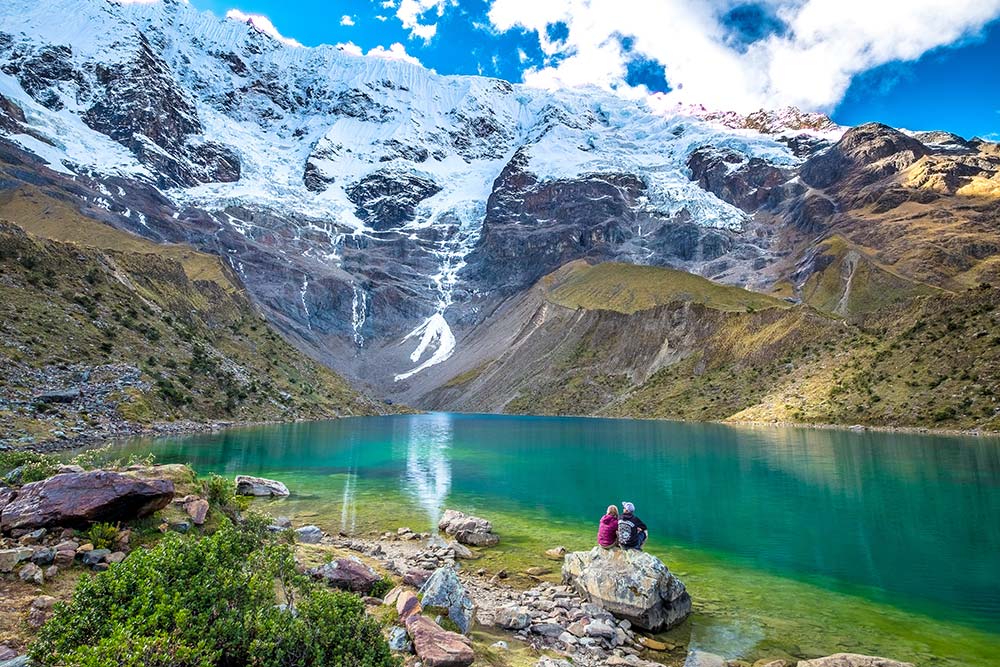
Ancascocha Lake
This expedition is exceptional, often called the Hidden Inca Trail or the Inca Super Trail. If you decide to embark on this journey, you will find yourself meandering majestically through the mighty Andes, following in the original footsteps of the Incas. National Geographic recognizes it as one of the “20 Dream Trails for Hikers”, offering a remote and highly scenic experience, an extraordinary alternative to the traditional Inca Trail to Machu Picchu. This trail is Peru’s best-kept treasure, replete with spectacular Andean landscapes that remain untouched by man’s hand.
Along the way, you’ll marvel at a towering, vertiginous waterfall, immerse yourself in the serenity of an enchanting river meandering through open valleys, and challenge yourself to cross snow-capped mountain passes before heading into the cloud forest. And, of course, the jewel in the crown is the stunning Ancascocha Lake, which lends its name to the trail – it is simply breathtaking! This trail is an absolute marvel; best of all, you will have this paradise, except for the possible company of llamas, alpacas, condors, and the locals.
The Ancascocha trek is an adventure that combines physical challenges, the sublime beauty of nature, and a unique cultural experience. It is the perfect option for those looking to explore a less crowded route to Machu Picchu and immerse themselves in the very essence of nature.
Location
The trekking route starts approximately two hours from Cusco in an area known as Socma, which is located in the Sacred Valley of the Incas. The community of Ancascocha is located at an altitude of 3,700 meters above sea level.
Details of the hike
- Hiking distance: 56 km (34. 8 miles)
- Maximum altitude: 4,650 m (15,255 ft.)
- Duration: 5 days.
- Difficulty: Like many other hikes in the mountains, this trek is on the problematic side of the scale as you head to high altitude and experience elevation changes. There are more manageable parts, especially on the last day.
How to get there?
At Salkantay Trekking, we can accompany you on this unparalleled adventure. With our 5-day Ancascocha trek, your journey begins with pick-up at your hotel and a comfortable ride to Soqma, where you will enjoy breakfast before starting the trek. You will pass by the Perolniyoc waterfalls and the Inca site of Racaypata, where you will learn about the history of the Incas and enjoy chef-prepared lunches in the middle of the mountains. Afterward, you will arrive in Rayan for the night.
The next day, you will ascend to the Abra Kuychiccasa, where you will have panoramic views. After lunch, you will continue to the Ancascocha Lake and Abra Huayanay, the route’s highest point. You will then descend to the community of Quesga and spend the night.
The third day includes a more leisurely hike along the Classic Inca Trail to KM 82, where you have lunch before saying goodbye to the team and heading to Ollantaytambo by train. From there, you will travel to Aguas Calientes for the night before visiting Machu Picchu the following day. After your exploration, you will return to Cusco to finish your adventure.
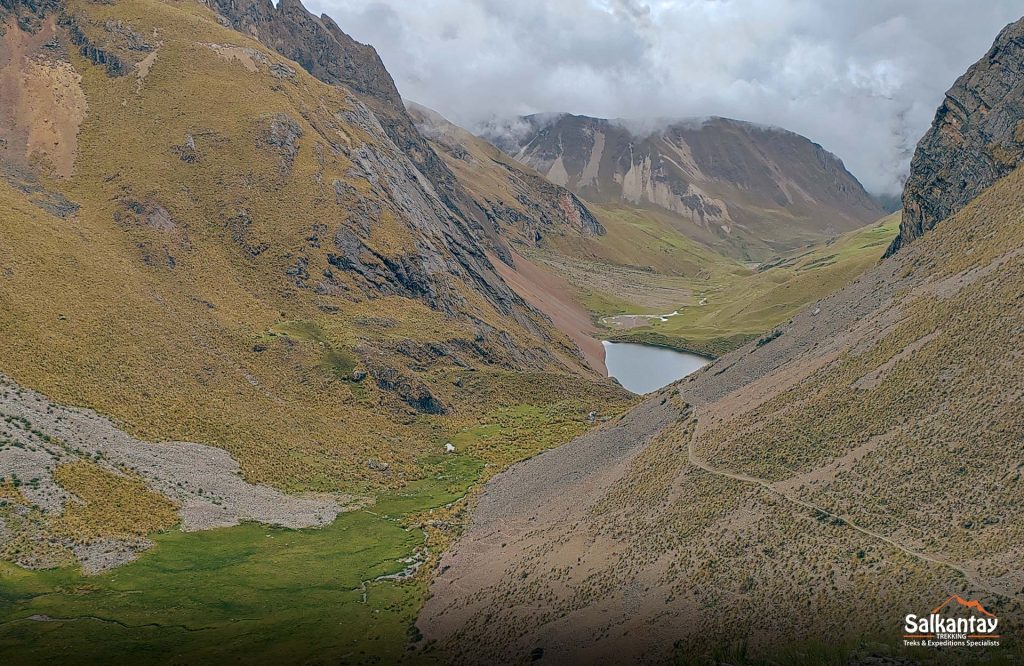
Can I get to the lake on my own?
Yes, it is possible to reach the lagoon on your own. However, previous hiking experience and familiarity with mountain navigation are recommended.
You can also hire a tour guide. This is a good option if you need hiking experience or want to learn more about the area.
Importance
The Ancascocha Lake is a place of great natural and cultural beauty.
The hike to the lagoon is a unique experience that allows you to enjoy the landscapes of the Peruvian Andes.
The lake is a vital water resource for the community of Ancascocha.
Recommendations
- Make sure you are acclimatized to the altitude before starting the hike.
- Take adequate clothing and equipment for the hike.
- Be aware that the weather in the area can be unpredictable.
- Bring enough water and food for the trek.
- Respect the environment and local culture.
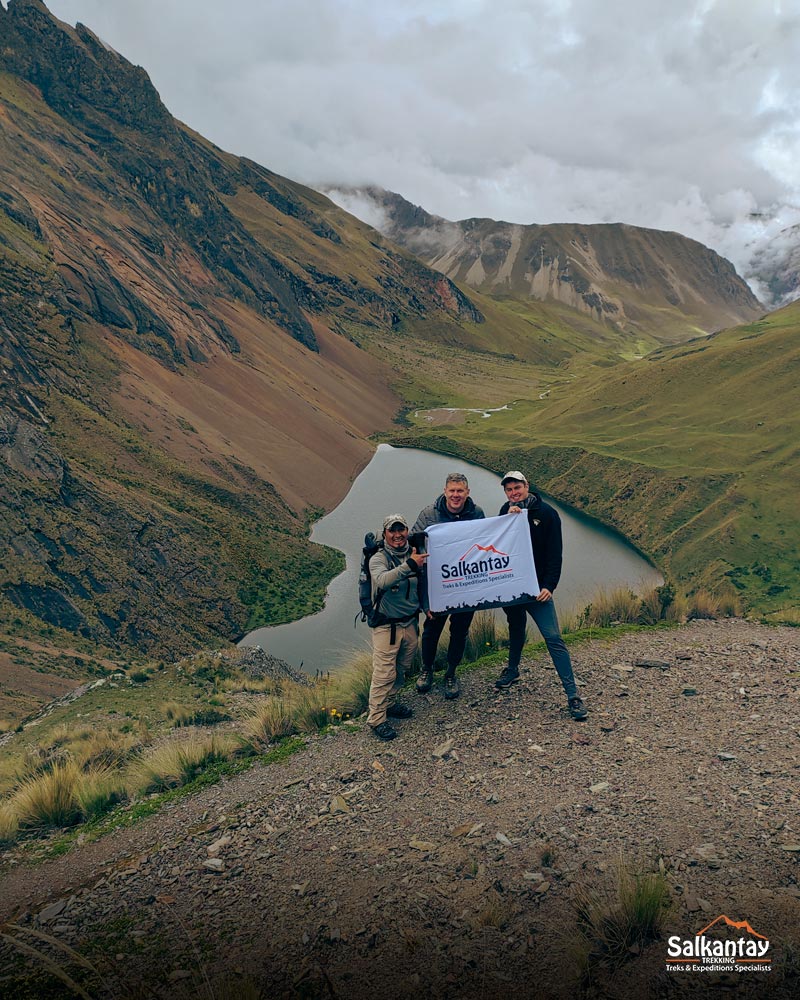
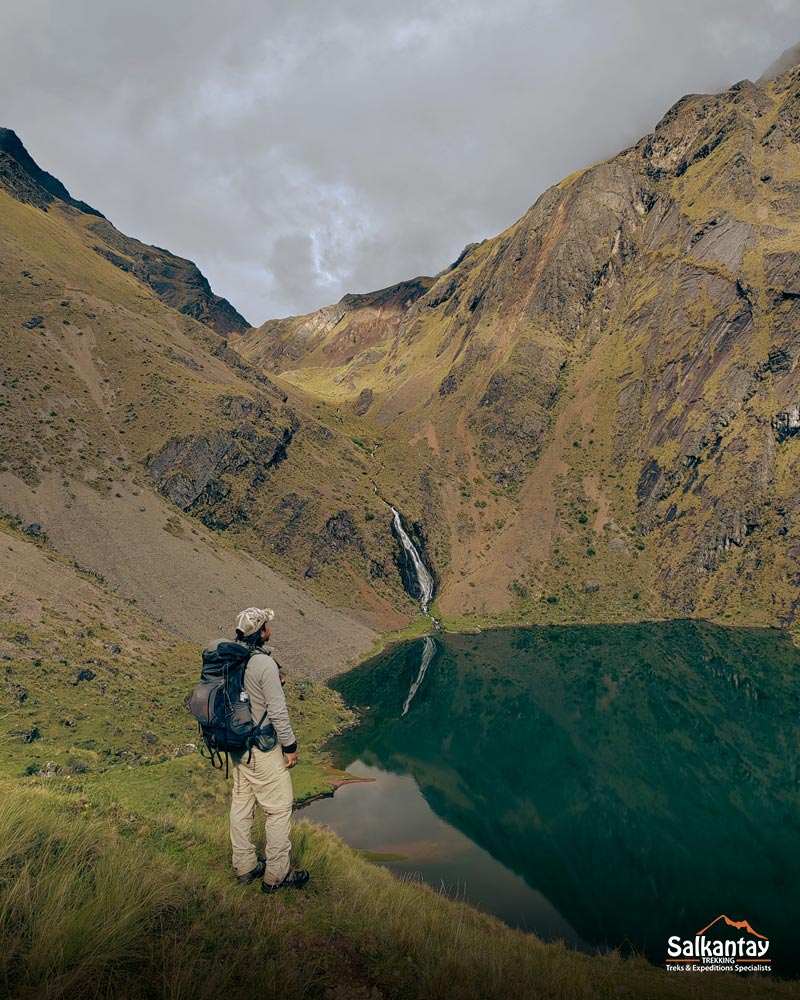
Qoricocha Lake
The Qoricocha lake is a natural treasure located in the district of San Jeronimo, in the province of Cusco, Peru. It is at an altitude of 3,700 meters above sea level, approximately 8 kilometers northeast of the vibrant city of Cusco. Its oval shape and extension of about 30 hectares captivated this picturesque lake. Its emerald green waters and a maximum depth of 10 meters contrast beautifully with the impressive mountain scenery and lush vegetation surrounding it, creating a setting of undeniable natural beauty.
The name Qoricocha comes from two Quechua words: “qori,” which means “gold,” and “cocha,” which means “lagoon”. The lake received this name because its waters reflect the sun’s rays like gold.
Location
The Qoricocha Lake, is a natural body of water of great beauty that awaits you in the district of San Jeronimo, about 8 kilometers northeast of Cusco, Peru. You will find yourself at an altitude of 3,700 meters above sea level, and you will be surprised by its oval shape, covering an area of 30 hectares. Its emerald green waters, surrounded by majestic mountains and lush vegetation, make this place a perfect tourist destination if you love hiking, camping, fishing, and bird-watching. The lake offers an unparalleled natural experience and has a significant historical value: it is believed to have been a sacred place for the Incas, who used it to perform religious rituals. Explore this natural wonder and immerse yourself in its mystical charm!
Details of the hike
- Hiking distance: 4.8 kilometers
- Maximum altitude: 3,880 meters (12,729 feet)
- Duration: 3 to 4 hours (round trip)
- Difficulty: easy
How to get there?
We will head to the small village of Qorao (Ccorao or Corao), about 30 minutes from Cusco. Then, we will continue on a small road to the high Andes and the small village of Patabamba (3,850 m / 12,631 ft). We will continue for another fifteen minutes until we reach the Qoricocha Lake.
If you are very adventurous, you can arrive by bicycle. You will start pedaling through the modern city of Cusco and cross the Corao pass on a wide road surrounded by valleys. You will climb uphill until you reach the Qoricocha lagoon, where you can rest, relax your muscles, and enjoy the scenery.
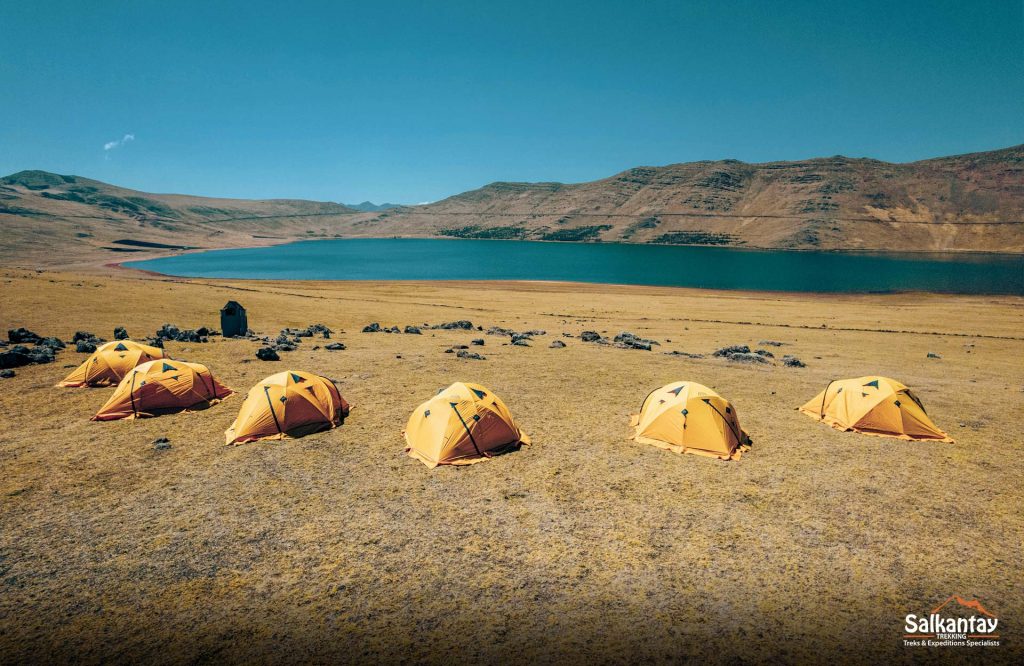
Importance
- Environmental importance: The lake and its natural surroundings are home to a unique biodiversity, providing habitats for diverse species of flora and fauna. They also serve as a water source for local fauna and a resource for the surrounding agriculture.
- Scenic value: Its scenic beauty makes it a popular tourist destination and recreation spot for residents and visitors. The view of its emerald green waters surrounded by mountains creates a breathtaking landscape.
- Cultural Impact: As part of the region’s natural heritage, the Qoricocha lake is vital for local communities and preserving the area’s cultural identity.
- Economic outreach: Tourism generated by the lake can benefit nearby communities by creating jobs in the tourism sector and generating income from tourism-related activities such as the sale of food and local handicrafts.
Recommendations
- Wear comfortable clothes and shoes for walking.
- Bring water and snacks.
- Bring sunscreen and a hat to protect you from the sun.
- Acclimatize to the altitude before hiking.
- Respect the environment and do not leave garbage on the trail.
- Visiting the lagoon with a tour guide is recommended to learn more about its history and culture.
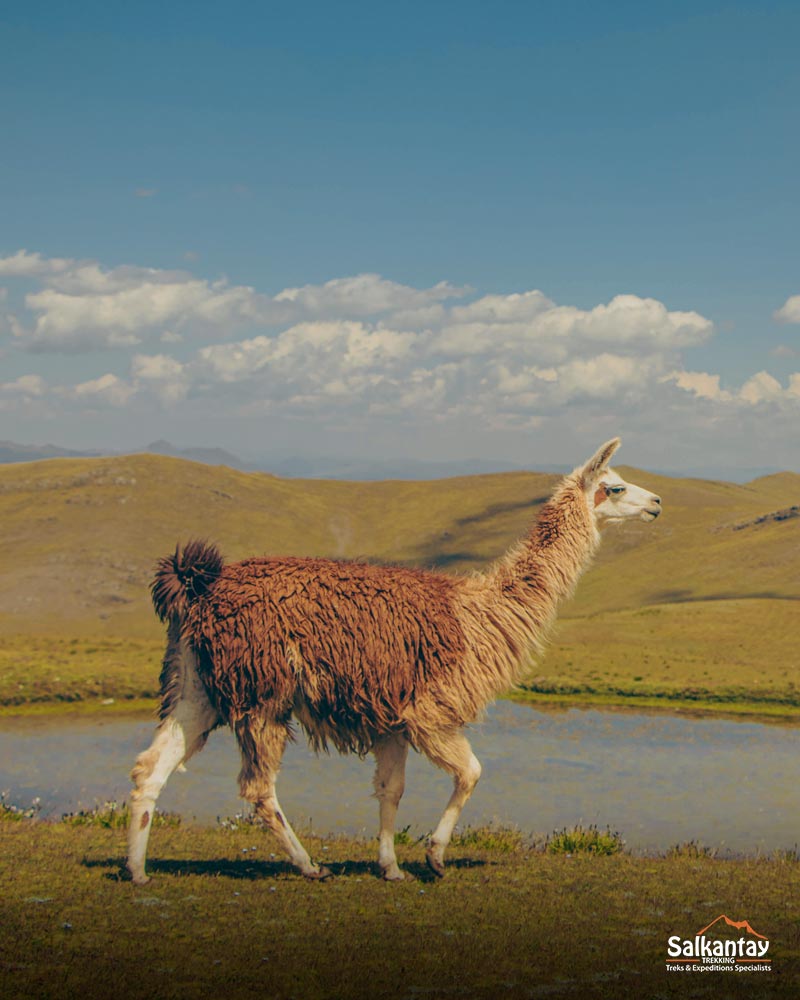
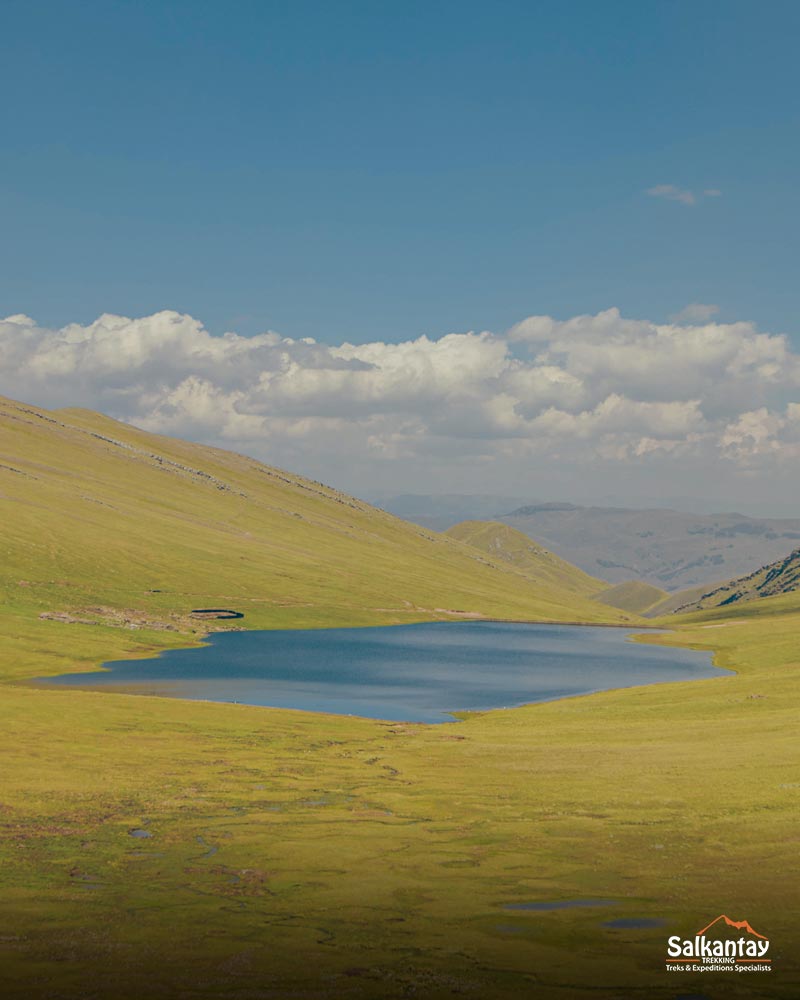
Four lagoons of Q’eswachaka
For a long time, the four lagoons were part of the beautiful Andean landscape of the villages south of Cusco. However, with the increase of tourism in the region, mainly due to the arrival of visitors interested in learning about Waqrapukara and the Queswachaka bridge, more than 40 local communities joined together to organize a tourist circuit that includes four of the most beautiful lagoons: Pomacanchi, Acopia, Asnagocha, and Pampamarca. Today, the ‘Circuit of the Four Lagoons’ has become an increasingly popular tour in Cusco.
Location
The Q’eswachaca lakes are located in the province of Canchis, department of Cusco, in southern Peru. They are presumed to be at a higher altitude than the Qoricocha lagoon, possibly above 4,000 meters above sea level.
Details of the hike
- The distance of the hike is between 15 and 20 kilometers (round trip) for the four lakes, 3 and 5 kilometers between each.
- Maximum altitude: 4,000 and 4,500 meters.
- Duration: 1 day tour.
- Difficulty: easy
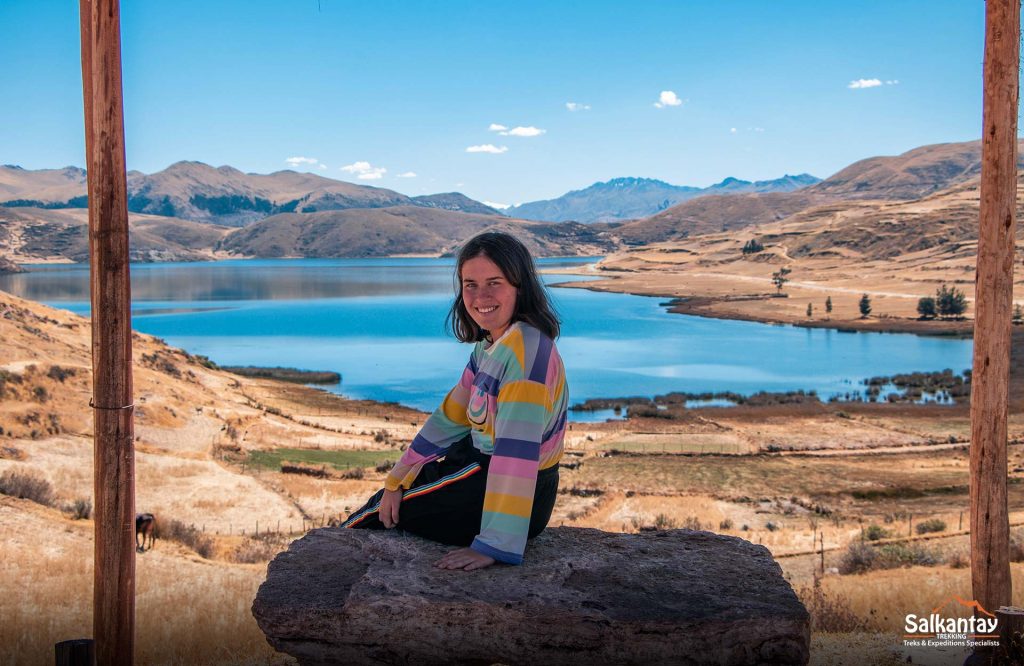
How to get there?
Meet these beautiful crystalline waters with us on our one-day tour of the Inca Bridge of Q’eswachaca. You will leave from Cusco to the province of Canas early in the morning, a three-hour trip with a stop for breakfast. Then, you will head to the village of Quehue and the famous Q’eswachaca Bridge, where you can cross it and learn about its history. Afterward, you will enjoy lunch near the bridge and admire the views of the canyon. You will visit the Pomacanchi, Ancascocha, or Acopia lakes on the way back. Finally, you will return to Cusco, remembering the unforgettable moments of our journey through the Peruvian Andes.
Importance
- Scenic importance: these lagoons are part of the beautiful Andean landscape of the southern region of Cusco, offering breathtaking views and natural scenery of great beauty.
- Cultural impact: The lagoons are part of the ancestral territory of the local communities, which have preserved their traditions and culture over time. The tourist circuit that includes them allows visitors to explore and learn about the history and lifestyle of these communities.
- Tourism development: The tourism circuit of the four Qeswachaka lagoons has contributed to the economic development of local communities by promoting sustainable tourism in the region. This has generated employment opportunities, improved infrastructure and services, and strengthened the local economy.
- Environmental conservation: Promoting sustainable tourism in the area has increased interest in environmental and natural resource conservation. Local communities have taken measures to protect the lagoons and their surroundings, thus preserving biodiversity and local ecosystems.
Recommendations
- Due to the altitude, it is recommended to acclimatize for a few days in Cusco before trekking.
- Hire an experienced local guide who knows the area and can explain the importance of the lagoons.
- Wear appropriate clothing and footwear for the Andean climate (cold, wind, possible rain).
- Bring enough water and energy snacks.
- Protect yourself from the sun with a hat and sunblock.
- Respect the environment and take all the garbage generated.
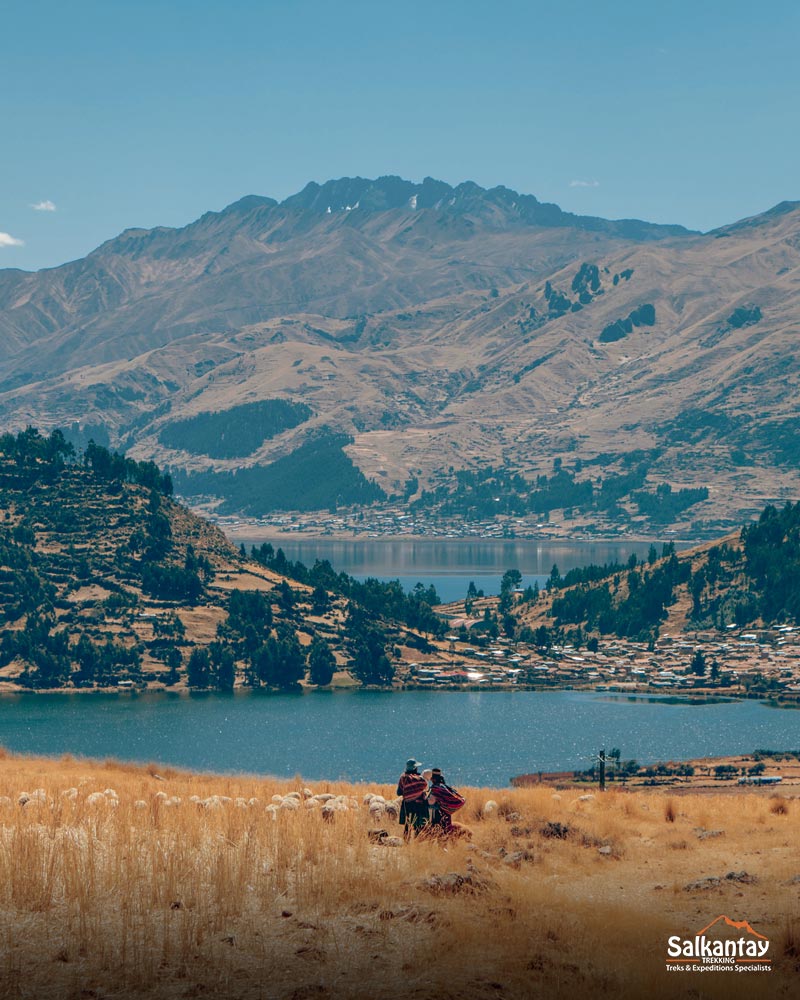
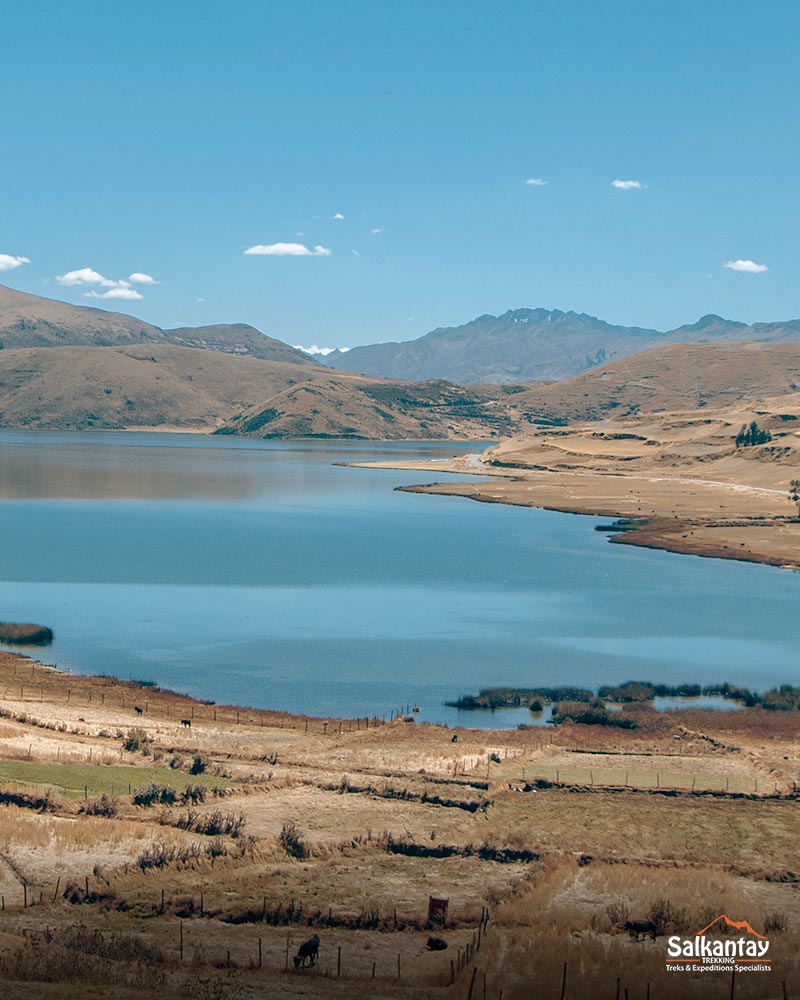

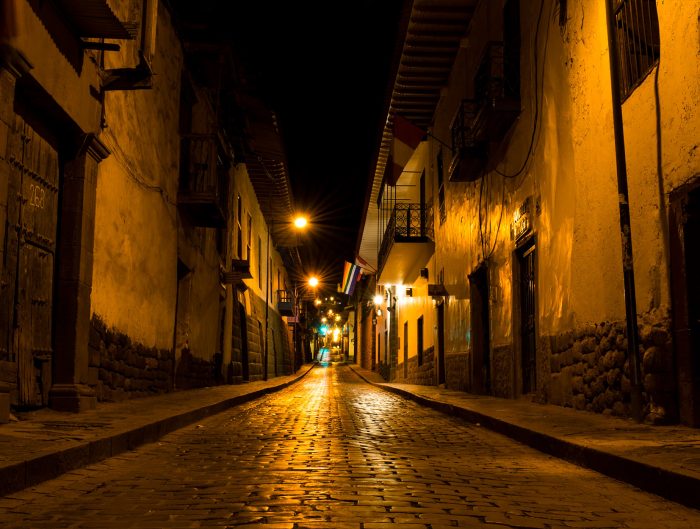

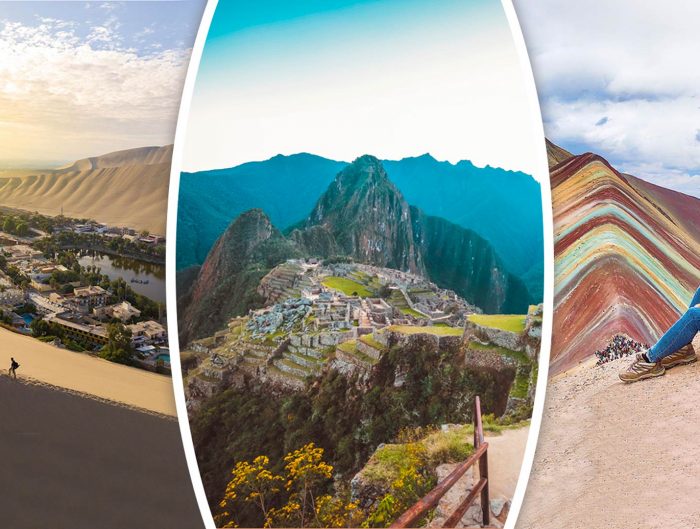
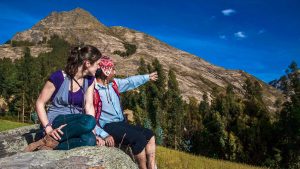

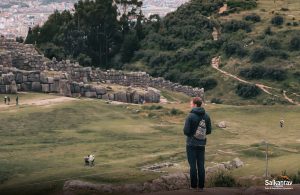
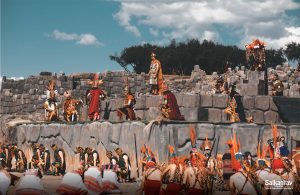
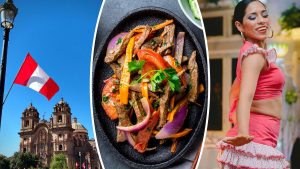
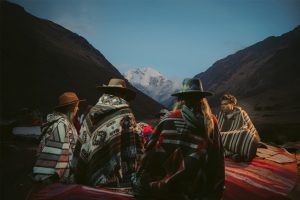


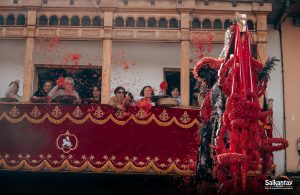
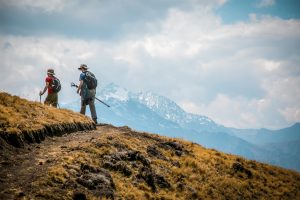
Leave A Reply